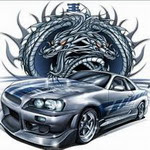

TSI with 122 PS
Maximum power with minimal consumption – within a very short period of time this property has made the TSI four cylinders synonymous with a new generation of the most fuel-efficient and at the same time sporty Volkswagen engines. Representing the entry level into the world of these multiple award winning engines is a 90 kW / 122 PS strong TSI (at 5,000 rpm). In the Scirocco, the four cylinder engine develops its maximum torque of 200 Newton-meter at a low 1,500 rpm – i.e. just above idling speed. The TSI takes the car to a top speed of 200 km/h. The122 PS Scirocco handles the classic 0-100-km/h sprint in 9.7 seconds. Its average fuel consumption of 6.1 liters Super Unleaded per 100 kilometers makes it one of the most economical sports cars of its class. Important: even this entry-level engine breathes agility into the Scirocco in the lower speed range and turns country highways into a source of great enjoyment.
TSI with 160 PS
This is the latest TSI: a four cylinder, turbo- and supercharged, with 118 kW / 160 PS (at 5,900 rpm). Like all of the TSIs, this engine is exceptionally economical (average fuel consumption: 6.5 l/100 km) and torque-strong (maximum of 240 Newton-meter at just 1,750 rpm) too. This TSI takes the Scirocco from rest to 100 km/h in 8.0 seconds; its top speed is 217 km/h. As an option, the 160 PS TSI may be paired with the first 7-speed dual clutch transmission (DSG) in the world that is transverse mounted.
TSI with 200 PS
At the highest power level, the Scirocco comes with a powerful 147 kW / 200 PS (at 6,000 rpm) TSI. It too has a turbocharger, and it also shines with very good torque and fuel economy. Per 100 kilometers this 280 Newton-meter (from 1,700 rpm) strong four cylinder consumes just 7.6 liters of fuel. Yet it can still deliver a top speed of 235 km/h. The highest performing Scirocco of all times completes the sprint to 100 km/h in 7.2 seconds. As on the Golf GTI with an identical engine, for example, this engine can be ordered with an innovative 6-speed dual clutch transmission on the Scirocco too.
TDI with 140 PS
At its market launch in Europe, the Scirocco will already be available with a clean and torque-strong 140 PS TDI (103 kW at 4,200 rpm). This highly advanced common rail diesel is especially quiet. It develops its maximum torque of 320 Newton-meters starting at just 1,750 rpm. The Scirocco completes the 0-100-km/h sprint in just 9.3 seconds with this TDI. Its top speed of 207 km/h contrasts with an average fuel consumption of just 5.4 liters per 100 kilometers. Volkswagen offers an optional 6-speed DSG with this engine too.
Front end
The front end of the Scirocco displays a completely new Volkswagen design language. On the one hand, it preserves historical elements, while simultaneously taking a great leap forward. The radiator grille and bumper are characterized by a dynamic that is timeless and impressive. Technically, the front end concept also fulfills Volkswagen’s stringent requirements for pedestrian protection.
Stylistically, the upper area of the Scirocco’s front end is dominated primarily by horizontal lines. Spanning the area between the prominent dual headlamps is a very narrow air inlet in luxurious black. Beneath this is a very clearly designed area in car color. This narrow double band of the black radiator grille and bumper painted in car color, defined by sharp lines, will be used to identify other new models in the future.
In the lower section of the front end, the image is marked by a central air inlet in black with its diamond-shaped pattern, and to its left and right the integrated turn signal and fog lamps. Incidentally, besides the New Beetle, the Scirocco is the only other Volkswagen to sport the VW emblem, not on the radiator grille, but on the engine hood instead.
Side profile
If you run your hand, first over one of the headlamps, then over the fender and a door, you will notice that the profile curves alternate in direction. Depending on the perspective and incident light, these transitions on the sides of the car give it the appearance of a moving muscle. The powerful image is reinforced by the standard 17-inch wheels, which – due to the large track width (front 1,569, rear 1,575 millimeters) – are practically flush with the body.
Furthermore, it is the hidden B-pillar, the line of windows that rises steeply toward the rear, and the conspicuously striking C-pillar that – together with the long roof line that appears to be endless – convey a very unique presence and dynamics. In the rear area, an integrated roof spoiler offers another plus in dynamics and additional downforce at the rear axle. Set in very clear counterpoint are the sculpturally shaped taillights that are also eye-catching and prominent from the side view.
Rear end
The sculptural form of the wide taillights is most apparent when viewed from the rear. Here, the car’s character is defined by the ratio of proportions between the roof and shoulder section and thereby the car’s waist. It is sharply contoured, since the roof runs significantly narrower than the overall body. These stylistic traits produce a design typical of a very powerful and significantly more expensive sports car. In any case, the really wide track actually looks even wider than it is. From the rear, the C pillars cannot be made out, since the rear window extends across the entire vehicle width. The overall design of the rear end – broader, with heftier bumpers plus a wide wheel track, the roof line and roof spoiler, plus wide wrap-around rear window – all lend an exceptionally powerful image to this car.








No comments:
Post a Comment